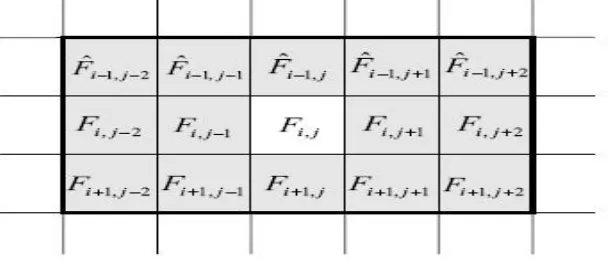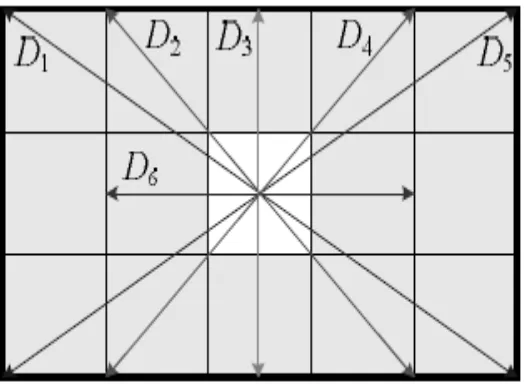Technology (IJRASET)
Removal of Impulse Noise In Image Using Simple
Edge Preserving Denoising Technique
Omika. B1, Arivuselvam. B2, Sudha. S3 1-3
Department of ECE, Easwari Engineering College
Abstract— Images are most often corrupted by impulse noise in the process of signal acquisition and transmission. Reducing noise has always been one of the standard problems of the image analysis and processing community. Even though, at the same time as reducing the noise in a signal, it is important to preserve the edges. Edges are of critical importance to the visual appearance of images. So, it is desirable to preserve important features, such as edges, corners and other sharp structures, during the denoising process. The proposed work presents an efficient implementation for removing impulse noise. The experimental results show that the proposed technique preserves the edge features and obtains excellent performances in terms of quantitative evaluation and visual quality. The design requires only low computational complexity and two line memory buffers. It’s hardware cost is quite low. When compared with existing implementations, the proposed design achieves better image quality with less hardware cost. In images, impulse noise (salt &pepper) are introduced and PSNR and MSE values are checked. The Simple Edge-Preserved Denoising technique (SEPD) shows that better PSNR can be achieved.
Keywords— Signal acquisition, denoising, line buffer, SEPD, PSNR, MSE.
I. INTRODUCTION
Image processing is widely used in many fields, such as medical field, remote sensing, colour processing, robot vision, iris recognition, and so on. Images are often corrupted by impulse noise due to the occurrence of an error which is generated in the noisy sensor and communication channel. Hence, an efficient denoising technique is very important for the image processing applications. It is important to eliminate noise in the images before some subsequent processing, such as edge detection, image segmentation and object recognition. Many image denoising methods have been proposed to carry out the impulse noise suppression. In most reviews, standard median filter is used to implement the denoising process. The switching median filter [5] consists of two steps: 1) impulse detection and 2) noise filtering. It locates the noisy pixels with an impulse detector, and then filters them rather than the whole pixels of an image to avoid the damage on noise-free pixels. Generally, the denoising method for impulse noise suppression can be classified into two categories: lower complexity techniques and higher-complexity techniques. The intensity of impulse noise has the tendency of being either relatively high or relatively low. Thus, it could severely degrade the image quality and cause some loss of information details. In this paper, we focus only on the lower-complexity denoising techniques because of its simplicity and easy implementation with the VLSI circuit.
II. EXISTINGSYSTEM
A. New Impulse Detector
In [6], a new impulse detector (NID) for switching median filter was used. By using 1-D Laplacian operators, NID obtain a minimum absolute value to detect noisy pixels. The image quality is determined by calculating mean square error (MSE). The computational complexity is high in this method.
B. Decision Based Algorithm
In [7], a decision-based algorithm (DBA) is used to remove the affected pixel by the median or by its neighbouring pixel value according to the proposed decisions. The picture quality is determined by calculating PSNR. The computational complexity is high.
C. Efficient Removal Of Impulse Noise
In [7], a method used to remove the impulse noise (ERIN) is based on simple fuzzy impulse detection technique.
III. PROPOSEDSYSTEM
Technology (IJRASET)
buffer. Only simple arithmetic operations, such as addition and subtraction, are used in SEPD.
In SEPD, Assume that the current pixel to be denoised is located at coordinate (i, j) and denoted as Pij ,and its luminance values
before and after the denoising process are represented as fij and fij` respectively. SEPD is composed of three components: extreme
[image:3.612.159.428.143.230.2]data detector, edge-oriented noise filter and impulse arbiter.
Fig. 1 Block Diagram
A. Extreme Data Detector
The extreme data detector detects the minimum and maximum luminance value in the image. If a pixel is corrupted by the fixed-value impulse noise, its luminance fixed-value will jump to the minimum or maximum fixed-value in gray scale. If fi,j is not equal to minimum or maximum value, it is concluded as Pi,j is noise-free pixel and the denoising process is skipped. If fi,j is equal to minimum or maximum value, its five neighbouring pixels are checked and then the result will be stored.
B. Edge Oriented Noise Filter
This is a new strategy for combining orientation adaptive filtering and edge preserving filtering. The filter which adapts to the local orientation avoids the filtering across the borders. The local orientation never contain two fields which can be achieved using generalised filtering. To locate the edge existed in the current W, a simple edge-catching technique which can be realized easily
with VLSI circuit is adopted. To decide the edge, consider six directional differences, from D1 to D6 to avoid possible misdetection.
Let Mij represent the set of neighbouring pixels of Pij within the 3x5 mask. If the value of pixels are corrupted by fixed value impulse noise then it will jump to a minimum or maximum value in a gray scale. Assume that FMIN and FMAX denote the minimum and maximum luminance values in Mij. If Pij is corrupted by impulse noise then Fij will be much larger than FMAX or less than FMIN.
Fig. 2 Representation of Noisy Image Pixel
D1=F′i-1,j-2-Fi+1,j+2 D2=F′i-1,j-1-Fi+1,j+1 D3=F′i-1,j-Fi+1,j D4=F′i-1,j+1-Fi+1,j-1 D5=F′i-1,j+2-Fi+1,j-2
D6=F′i,j-1-Fi,j+1
Parameters
[image:3.612.158.462.429.561.2]Technology (IJRASET)
F′′i,j =mean of luminance values of the two pixels
[image:4.612.170.432.111.304.2]D1-D6 = Directions
Fig. 3 Six Directional Difference
C. Impulse Arbiter
The value of a pixel, corrupted by the fixed-value impulse noise will jump to be the minimum or maximum value in gray scale. However, the converse is not true. Pixel with minimum or maximum luminance values might be identified as a noisy pixel even if it is not corrupted. To overcome this, additional condition is used to reduce the possibility of misdetection. If Pi,j is a noise free pixel and the current mask has high spatial correlation, fi,j should be close to fi,j and |fi,j – f”i,j| is small. So Pi,j might be a noise free pixel but the pixel value is small.
The value of |fi,j – f”i,j| is measured and compared with the threshold value to determine whether is corrupted or not. The threshold value denoted as TS is a predefined value.
Technology (IJRASET)
Fig.4 Example for Edge Oriented Noise Filter
IV. RESULTANALYSISANDCOMPARISON
[image:5.612.180.431.60.303.2]To verify the characteristics and performances of various denoising algorithms, a variety of simulations are carried out on the well-known 256 x 256 8-bit gray-scale Lena image. In the simulations, image is corrupted by impulse noise (salt-and-pepper noise), where “salt” and “pepper” noise are with equal probability. The peak signal to noise ratio (PSNR) is calculated to illustrate the quantitative quality of the reconstructed image. Table I shows PSNR value with impulse noise at various noise densities from 10% to 90% for the reference images. It can be observed from the results that the performances of the images processed by the proposed algorithm are always better.
TABLE I
COMPARISONS OF PSNR OF IMAGE “POUT”
NOISE DENSITY DBA SEPD
10% 33.1259 34.1077
20% 33.1148 34.1059
40% 33.1125 34.1036
50% 32.1065 34.0918
90% 32.0956 34.0865
V. SIMULATIONRESULTS
[image:5.612.165.460.413.701.2]Technology (IJRASET)
Fig.6 PSNR Vs Error value
VI. CONCLUSION
In this paper, the Matlab simulation for the removal of impulse noise is presented. The design requires only two line memory buffer and computational complexity is less, therefore the cost of implementation is less. The extensive experimental results shows that comparison of PSNR value of different algorithm achieves excellent performance in terms of quantitative analysis and visual quality, even when the noise ratio is as high as 90%.
REFERENCES
[1] Yeu-Horng Shiau, Pei-Yin Chen, “A Low Cost Architecture for Illumination Adjustment in Real time Applications” IEEE Transactions on Intelligent Transportations Systems,Vol.16,No.2,April 2015.
[2] N.J.R. Muniraj, Surya Prabha, “Removal of impulse noise using VLSI technology,Elixir Adv. Engg. Info. 38,pp. 4105-4108,2011.
[3] Vijimol V V and Anilkumar A.,“A Review: Removal of Impulse Noise in Image,” IOSR Journal of Computer Engineering (IOSR-JCE) e-ISSN: 2278-0661,p-ISSN: 2278-8727, PP 01-06.
[4] W. Luo, “Efficient removal of impulse noise from digital images,” IEEE Trans. Consum. Electron., vol. 52, no. 2, pp.523–527, May 2006.
[5] T. Sun and Y. Neuvo, “Detail-Preserving Median Based Filters in Image Processing,” Pattern Recognition Letters, vol. 15, pp. 341-347, Apr. 1994
[6] .S. Zhang and M. A. Karim, “A new impulse detector for switching median filter,” IEEE Signal Process. Lett., vol. 9, no.11, pp. 360–363, Nov. 2002.


